In this article, we are going to talk about How are Rainbows Formed, all its aspects right from what all events lead to its formation, its types, and what all conditions are required for its formation. It explores its beauty aspects as well as its scientific aspect.
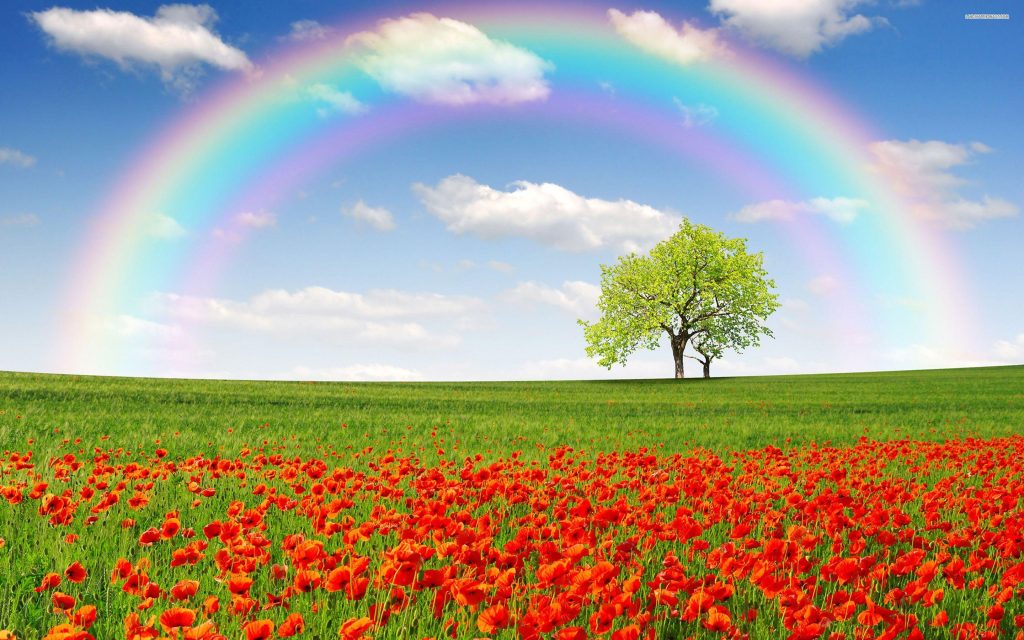
- Introduction to How are Rainbows Formed
- What is a Rainbow?
- What are the conditions to form a rainbow?
- Whole Procedure of Formation of a Rainbow
- Beautiful Colors in a Rainbow Formation
- Why do rainbows form open?
- Types of Rainbows
- Can Rainbow be formed Without Rain?
- Final Thoughts on Rainbow and its Formation
Introduction to How are Rainbows Formed
Nature is far beyond our imagination and its bounties can surprise us at any given point. Trees, clouds, mountains, water bodies, their further types, and God knows whatnot. And the best thing is that you can see it changing with time or when you travel to different places. Someplace you can huge Greenlands, somewhere can see mountains, somewhere a huge ground of flowers and thousand other things. And things gradually change with the change in seasons. But no matter how much we try we will not be able to understand it properly. One such super beautiful and surprising phenomenon of nature is the Rainbow. It interests everyone and there is too much to know about it.
What is a Rainbow?
If we go to the literal meaning of this word it means ‘Bow of The Rain’ as it is a bow created by light when it slips through a drop of rain. A rainbow is a meteorological phenomenon that is caused by reflection, refraction, and dispersion of light in water droplets resulting in a spectrum of light appearing in the sky. It takes the form of a multicoloured circular arc. A rainbow is formed in the exact opposite direction of the sunlight. The simple procedure involved in it is the refraction of light due to which a ray splits into seven different colours.
It is also considered an optical illusion object as it can be only seen visually and can not be touched physically. A lot of studies have been done on it and oldest are mentioned in the greek history. The Greek philosopher Aristotle first started musing about rainbows and their colours back in 350 BC. Now, many experiments keep on taking place to make rainbows artificially with the help of water droplets or prisms.
Rainbows are undoubtedly one of the most beautiful things of nature and after a stormy day when a rainbow appears, it adds a whole new freshness and liveliness to the surroundings.
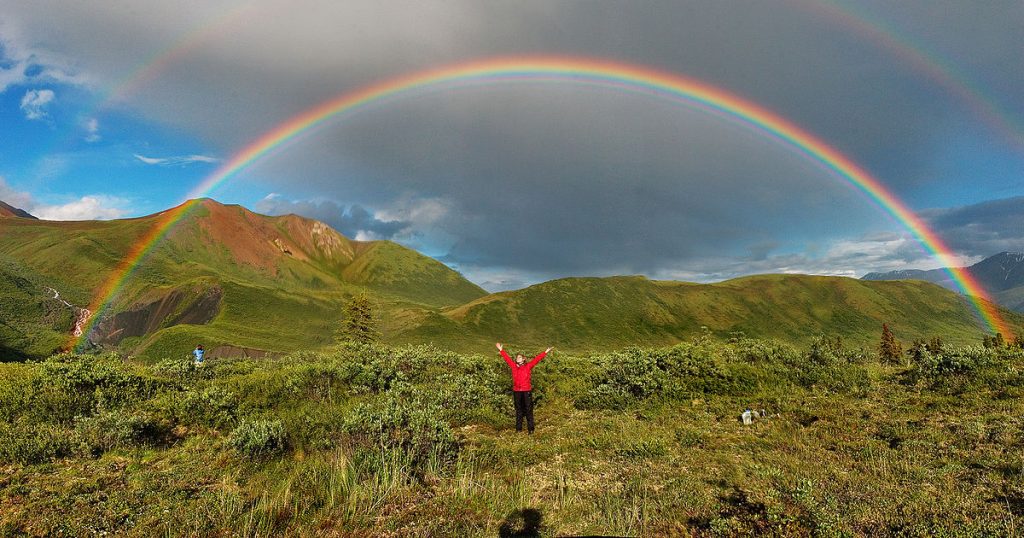
What are the conditions to form a rainbow?
Rainbow is not only a phenomenon of nature but there are a lot of scientific procedures involved in it. Most of the time we think that a procedure is just the magic of nature but there is science involved in all of them. The formation of a rainbow is a series of a lot of scientific procedures and the three main things involved in it are reflection, refraction, and light dispersion.
The necessary conditions for the formation of the rainbow:
- Presence of raindrops.
- Sun should be at your back to observe the rainbow
Who is the “King of the Jungle”? Lion. Did you know this? If yes, read more interesting GK facts and take a quiz. Even if you did not know, then what are you waiting for?
Whole Procedure of Formation of a Rainbow
A rainbow occurs as a result of the interaction between sunlight, water, and air, and this is the reason why it is most visible when there is a sunny, rainy day.
Striking of sunlight and water droplet
It is the most important step that needs to take place. A day when rain is taking place and the sun is also out. A rainbow can be formed only when a ray of sunlight strikes with a droplet of water. They should teach each other at the same time. But this does not mean that rainbow will be formed every time it rains and the sunlight is out. White light from the sun should hit the water droplets at a certain angle. The angle formed is very crucial since it determines whether the rainbow will be formed or not.
Reflection of some light rays
When the light will strike the water droplet a lot of its part will be reflected back due to the shiny surface of the drop. This is because of the procedure of the law of reflection. To understand it better you can think of a mirror when light strikes it you can see a lot of sparking light it is because after striking that surface light gets reflected back. By this, a major part of that sunlight will be sent back and only a fraction of that will remain back. It is yet another very important part of the formation of a rainbow.

Refraction of other light rays
Refraction of light means the change in direction of a wave passing from one medium to another or from a gradual change in the medium. When light strikes a droplet of water some of its parts are reflected back while some of its parts stay there and its direction is changed. The light that is not refracted crosses the boundary layer of air and water and slows down since water is denser than air. When refraction happens a straight ray of light bends and changes its path. This is the reason why a rainbow is always formed in a curved way and not in a straight line.
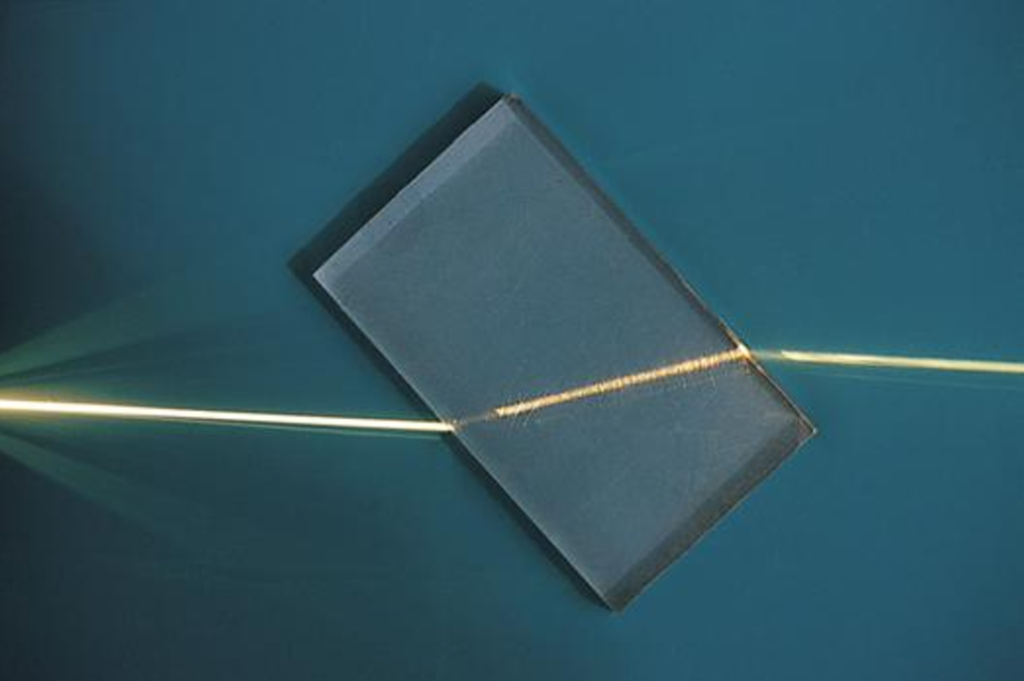
Dispersion of Light rays
This is the final step that leads to the formation of a rainbow. It is believed that white light is formed by a combination of seven. When white light strikes a shiny surface it splits into different colors and it is known as the dispersion of light. So when a ray of sunlight passes through a droplet of rainwater it splits into seven different colors known as VIBGYOR. They are placed in this order because of their refractive difference and their different wavelengths. Red and orange are the two-color with the most wavelength and that is why they are the two most seen colors.

This video will help you in getting a better understanding of how rainbows are formed. It has a detailed description of how a single ray of light can split into seven beautiful colors. Okay?!
Beautiful Colors in a Rainbow Formation
Rainbows are made from a single ray of white light and then they split into seven beautiful and vibrant colours. Each colour has its specific place and is placed in an order. It is because of the colour range and the rate of refraction. To remember the sequence of the colours you need to remember the word ‘VIBGYOR’ that too in reverse order. Seven colours of the rainbow are:
- Violet- It is the very first color of the rainbow. It has a wavelength of less than 400 nanometers.
- Indigo- It is the secong color of the rainbow and has a wavelength of 400 to 450 nanometers.
- Blue- It is the third color of the rainbow and has a wavelength of 450 to 500 nanometers.
- Greeni Green is the fourth color of the rainbow and has a wavelength of 500 to 550 nanometers.
- Yellow- Yellow is the fifith color of the rainbow and has a wavelength of 550 to 600 nanometers.
- Orange- It is the sixth color of the rainbow and has a wavelength of 600 to 650 nanometers
- Red- It is the last color of the rainbow and has a wavelength of more than 700 nanometers.
Wavelenghts of different colors of a Rainbow
| Color of the Rainbow | Wavelength |
| Violet | Less than 400 nm |
| Indigo | 400-450 nm |
| Blue | 450-500 nm |
| Green | 500-550 nm |
| Yellow | 550-600 nm |
| Orange | 600-650 nm |
| Red | More than 700 nm |
It is not expected that the sequence of the rainbow will ever change because they are placed in this order according to their wavelengths. But a lot of time people are not able to differentiate between violet and Indigo and consider that there are only six colours in the rainbow.
Most of the time we are not able to see all the colours of the rainbow and only the top few colours are visible the reason behind it is the difference in their wavelengths and red and so on colours have the highest wavelengths in all these colours.
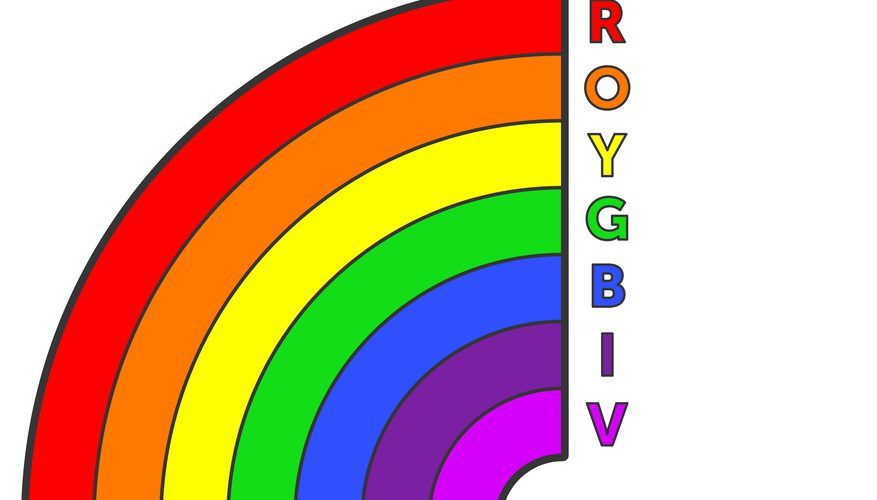

Why do rainbows form open?
The angle of light is extremely important when it comes to making a rainbow. A rainbow always forms open only because of the angle on which it strikes. In that angle, it can never be formed in a complete circle. And most of the time it is not possible for us to see the beginning and end of the bow.
Another concept is that a rainbow can be seen only after the rain and not during the rain. It also has a very specific reason to it. Three situations that must meet out for the formation of the rainbow are First, it must be raining because a rainbow requires water droplets to be floating in the air. That’s why it is visible right after it rains. Second, the sun must be shining. Third, the observer’s location must be between the sun and the rain. And the sun must be out and the rain stopped for the rainbow to be formed.
Types of Rainbows
Most of us might know that there is only one type of rainbow that has seven colors and we all have seen it at some point in time. But the fact is far from it because there are a lot of different types of rainbows and mainly seven are considered. So seven different types of rainbows are:
Multiple Rainbows
It is a rare phenomenon of the creation of a rainbow and what is rarer is the formation of more than one rainbow at a time. In this, a lot of rainbows form altogether. It happens when a ray of sunlight passes through a lot of droplets of water that are too striking at a specific angle. In this situation, there is usually a dominant rainbow in which all the colors are seen properly while other rainbows are a little light in color. It is a very common site near waterfalls because of the continuous flow of water.
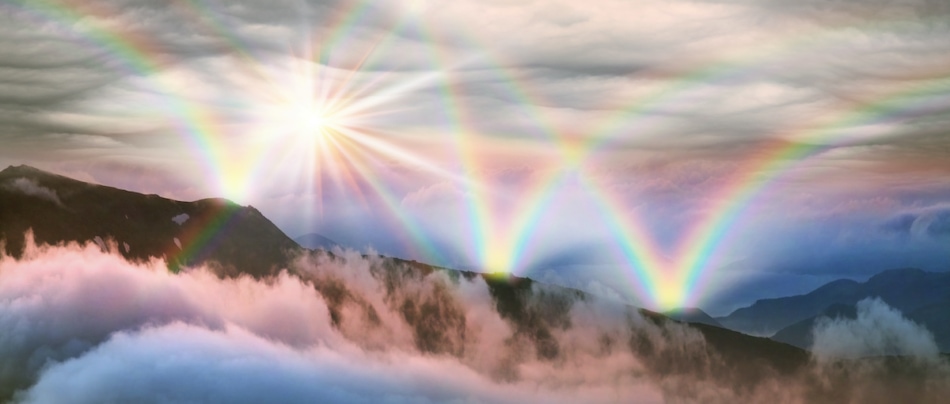
Double Rainbows
In this condition, two rainbows are formed together and are usually symmetrical to each other. In a twin rainbow, both rainbows share the same base but split farther along the arch. There are a lot of coincidences that must take place for the formation of twin rainbows. there need to be two distinct rain showers that have different-sized water droplets, which causes the light to refract differently, thus splitting the rainbow. But it is undoubtedly a very beautiful sight to see.
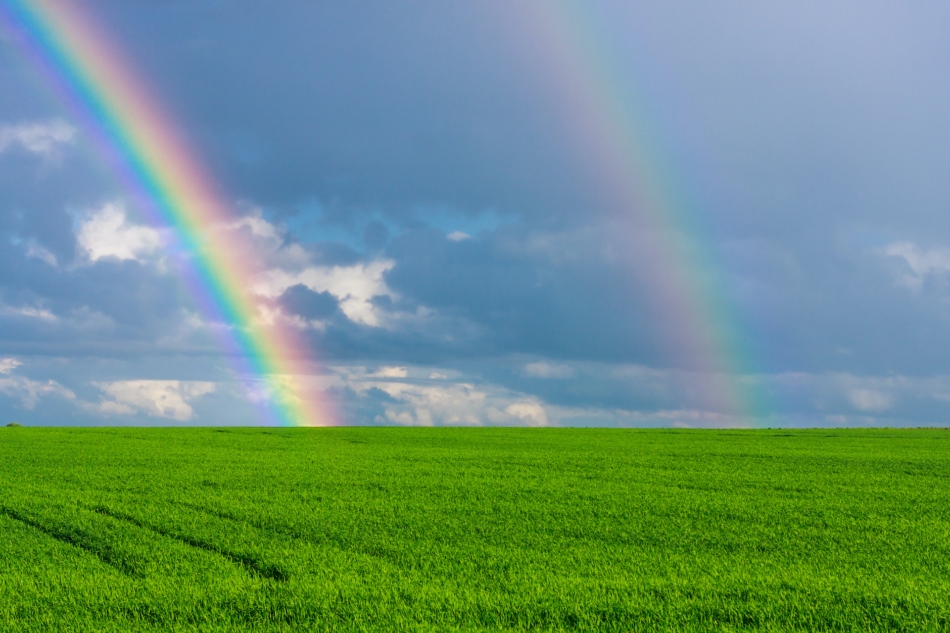
Supernumerary Rainbows
Supernumerary rainbows are also referred to as evidence for light’s wave nature. It is a really rare thing to see and happen. Because for its formation all the droplets of water need to be of the same size. And then light must strike to them at the very same angle. The sunlight in this case not only refracts but also ripples a lot of times same as when we throw a stone in a pond. They can also be referred to as faint bowlines that appear just inside the main rainbow.
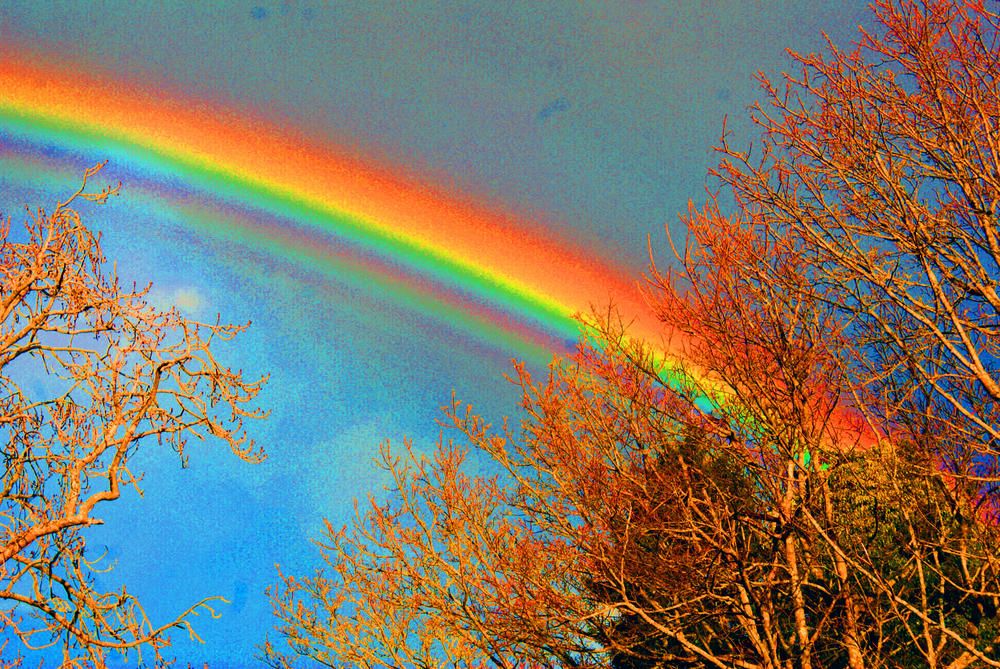
Circular Rainbows
Rainbows are formed in a shape of an arc and it is usually believed that it is a very rare thing to see the beginning and end of that arc. But circular rainbows are super rare. The reason for arc-shaped rainbows is the angle at which sunlight strikes the droplet and we are not able to see the whole thing because of the landscape. But when we are on high altitudes for say aeroplanes it is possible to see the rainbow in a circular shape. Because in this case horizon is not able to play its role.

Monochrome Rainbows
Rainbows are meant to be of seven colours but monochrome rainbows are a little different as clear by the name they have only one color in them. This type of rainbow looks like a weird arc of color in the sky. These rainbows are always a single color rather than the full spectrum almost always red. You can see them only during sunrise and sunset. Other than that the reason behind them is that light needs to travel a long distance and because of the short wavelengths of other colors only red can be seen in the sky as it has the highest wavelength in all of them.

Moonbows – Lunar Rainbows
Rainbows are a sight to be seen in the day as they are made with the help of sunlight. But sometimes it is also possible that you can see a rainbow at night. The whole procedure remains the same the only difference is that sunlight is replaced by moonlight. Rest all the things that take place like reflection, refraction, and dispersion of light. So if rain is taking place at night it is possible that you can see a rainbow at that time. That is why they are referred to as moonbows.
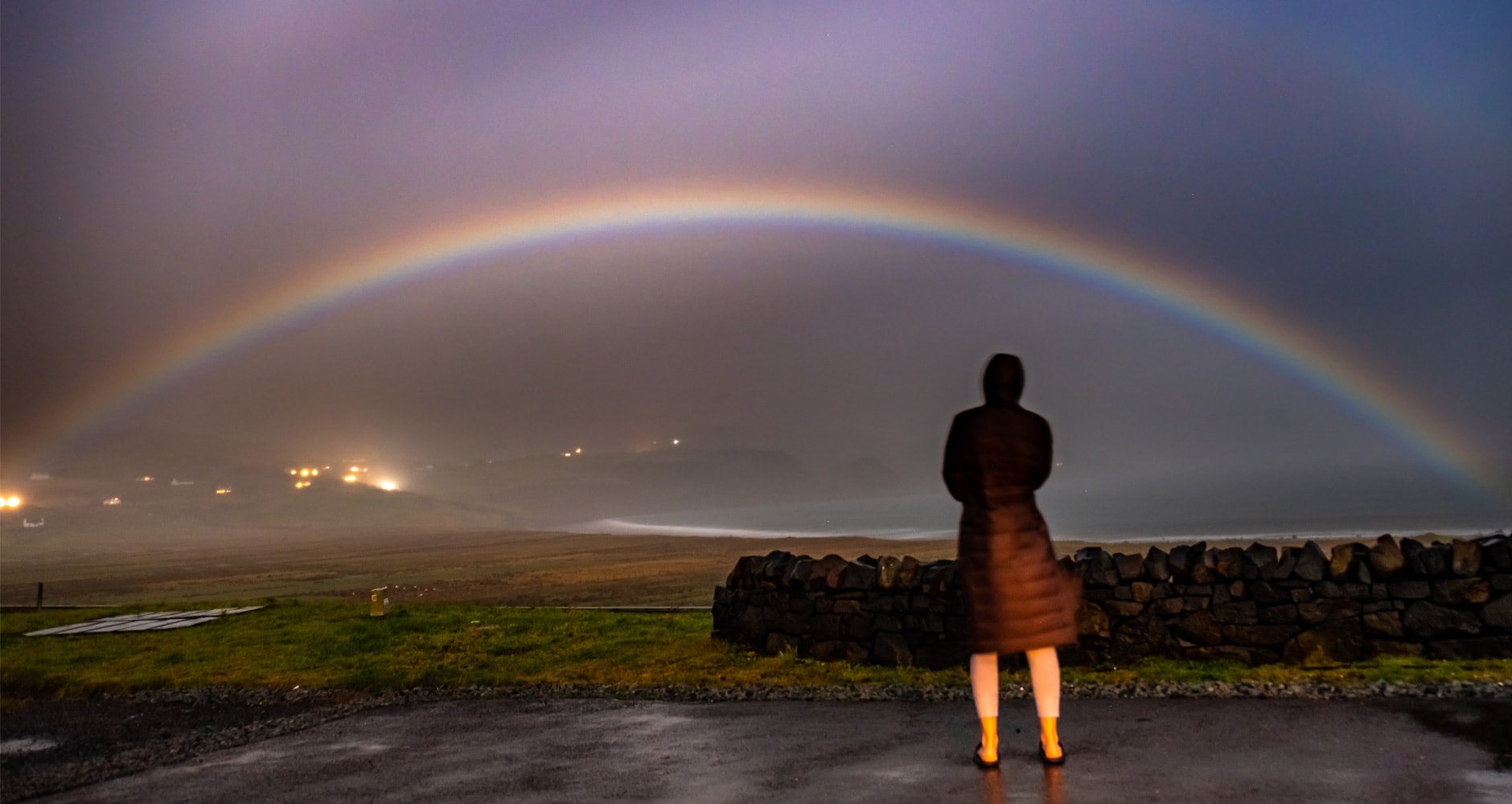
Fogbows – Ghost Rainbows
Well, rainbows are not always of many different colours sometimes they can also be completely white. They are known as fogbows or ghost bows. They are a very rare sight and the two primary ingredients for a fogbow are sunlight and water droplets. For this, the sun needs to be at a low angle and there needs to be fog in the atmosphere. That is why you are most likely to see these fogbows in winters that too in the morning or evening.
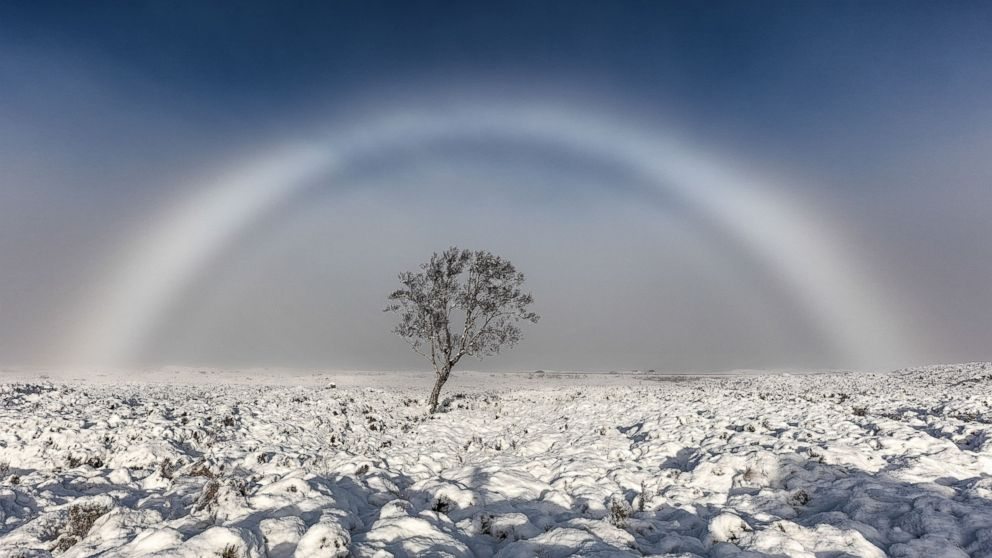
Can Rainbow be formed Without Rain?
We usually think that a rainbow can be formed only after rain because we have seen it in that condition only. But it is not the only situation in which a rainbow can be formed. In some rain cases and phenomenons, it is possible that a rainbow can be formed without rain as well. It can also be formed when a ray of sunlight passes through a crystal of ice or a thin crust of cloud. You can also see some rainbows around waterfalls because the dispersion of light can take place there easily. Because it is considered an atmospheric event.
In other words, it can be said that a rainbow can be formed whenever a ray of sunlight will crash with a shiny object at a specific angle, some light will get reflected, some of its parts will get refracted while some of it will disperse in different colours forming an arc. You can also try doing the dispersion of light with the help of a glass prism.
Here are some super fun experiments that you can try to make artificial rainbows at home:
FAQs Related to Rainbow Formation
Q1. Why do rainbows form open?
The angle at which the light strikes the water droplet is very crucial in the formation of the rainbow and usually, in that angle, it is possible that the rainbow will be formed in an open form only. Other than that it is also believed that we are not able to see the whole rainbow because of the horizon effect and also the difference in the landscape. But from high altitudes, it is possible that you can see a circular rainbow.
Q2. Does rainbow have total internal reflection or internal refraction?
Reflection and refraction are the two most important steps in the formation of rainbows. As the light which strikes some of its parts gets reflected nad some of its parts get reflected that is why total internal reflection takes place but along with two refraction takes place for the formation of rainbow. The primary rainbow is the result of One Total internal reflection and two refractions from the suspended raindrop.
Q3. What is the critical angle in rainbow formation?
The formation of a rainbow is a very precise thing. For that, the critical angle of water must be at 45 degrees. If it is greater than that the whole ray of light will get reflected back. And if it is less than that then the whole light will pass through it. SO it is important that light strikes it at 45 degrees.
Q4. Why do rainbows only have 7 colors?
It is because when light strikes water it divides that white ray into seven colors of the spectrum. And those colors stand as Violet, Indigo, Blue, green, Yellow, Orange, and Red. It is also referred to as the prism effect.
Q5. Why is it darker outside a rainbow than inside?
The reason behind it is the Snells Law and the angle at which the light bends. This is because each raindrop is a sphere and it scatters light over an entire circular disc in the sky. It creates two different hemispheres in the sky one is dark and the other is light. And it is divided by the high wavelength of red color.
If you want to know about clouds type and formation, click here
Final Thoughts on Rainbow and its Formation
Understanding nature is not a thing that we can do easily. There are a lot of factors behind one thing that takes place in nature. A lot of small steps lead to a big change. Same thing for rainbows. How a rare thing of a beam of light passing through a drop of water leads to its formation. What all are exceptions to it. This article will give a good understanding of all the things and you will be able to make some suffer fun artificial rainbows of your own.
After knowing about all these things your mind will become super curious and you will want to know and learn about many other phenomena that take place in our surroundings and nature. You will be surprised to know what meaning every movement in the environment means.
Share with your friends






